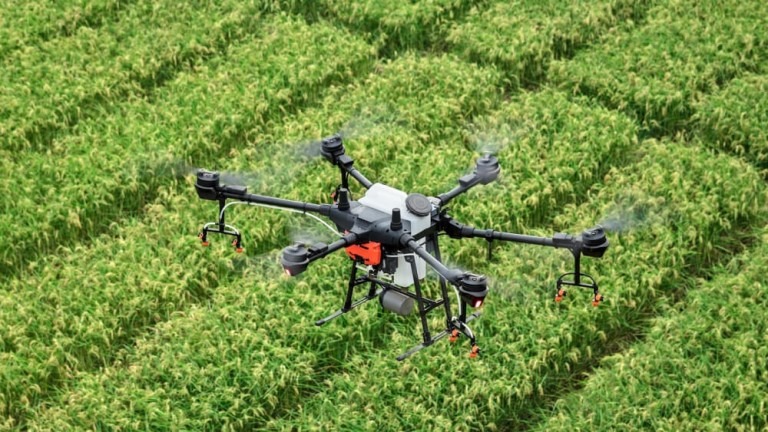IoT Applications: Agriculture

Smart Farming Opportunities
Trends Soracom is watching in 2021
As the global population rises toward nearly 10 billion by 2050, a recent UN report suggests we may need “the equivalent of almost three planets… to provide the natural resources needed to sustain current lifestyles.” Assuming a finite supply of arable land and clean water, we will have to find new ways to make the most of what we have. And we’ll have to do it fast.
On the consumption side, growing demand for alternative proteins suggests we’ll find ways to adjust our diet. On the production side, the connected technologies of the Internet of Things (IoT) promise to dramatically improve productivity, increasing yield and quality for a wide variety of crops, enabling new forms of smart farming, and improving living conditions and output for livestock and poultry.
And on the business and investment side, the time is right for innovation, with more funding and collaboration opportunities available than ever before:
• Funding availability: Softbank led a $200M fundraise to invest in indoor farms, with the goal of the $200 million Series B to bet on indoor farms while also opening doors to key partners in Asia and the Middle East to reach affluent consumers. Tech investors like Japan’s Softbank are seeking to bring agtech into the realm of global scalability.
• Meaningful exit opportunities: Historically, 95% of AgTech exits have resulted in mergers, acquisitions, and integrations into existing supply chain networks.
• Broad research and development interest: Space exploration is gaining renewed interest from both governmental agencies and private enterprises. With that comes new interest in sustainable sustenance. NASA, for instance, is now exploring we might be able to cultivate plants in space.
• Clear product development needs: Consider the innovation area of precision agriculture. “Approximately 500 million small and family farms contribute 80% of the global food supply,” writes MIT Media Lab. The goal of this technology is to help augment a farmer’s in-the-moment decision making.
Connectivity has the ability to transform farming practices ranging from field cultivation to irrigation systems, livestock, soil monitoring, crop monitoring, and climate condition assessments.
Precision Agriculture Examples
Technology to watch
Smart Bees. More than 70% of human food crops depend on bees for pollination. That makes bees a crucial contributor to the security of our global food supply. But the world’s honey bees are at risk. In fact, due to Colony Collapse Disorder, first identified in 2006, nearly 40% of bee colonies die each year, and even those that survive are often compromised.
BeeHero’s low-cost sensors translate information from inside the hives into over 25 different data points, each feeding BeeHero algorithms in order to predict beehive disorders before they can damage the colony. Indications include everything from colony health, brood diseases, and mite activity to the presence of a queen or the possibility of colony collapse.
But sophisticated machine learning algorithms require a large volume of high-quality data for effective training. Since that data set didn’t exist, BeeHero set out to build it, partnering first with commercial beekeepers representing 25% Israel’s working bees, and eventually with three of the largest commercial beekeepers in the U.S. Today, BeeHero owns the world’s largest database of measures related to bees and pollination.
Learn more about BeeHero’s sensor system.
Smart Crops. Since 2002, precision agriculture pioneer Hortau has applied its patented technology to help growers across North America optimize crop yields and quality while reducing water consumption, energy costs, and environmental impact.
Hortau’s smart irrigation systems apply both cutting-edge IoT capabilities and personalized agricultural expertise to one of the most fundamental challenges facing the industry today: how to maximize finite land and water resources to feed a rapidly growing population.
Learn more about Hortau’s smart irrigation system.
Smart Grain Storage.It’s estimated that between 30% and 50% of all crops grown worldwide go to waste. Between growing, picking, transit, storage, wholesale distribution, retail sale, and our home and restaurant refrigerators, there’s simply a lot that can go wrong for perishable goods like fruits, vegetables, and grains.
TeleSense, based in Sunnyvale, CA, just a few miles from California’s produce-heavy Central Valley, applies cutting-edge data collection and analysis to the challenge of storing grain for longer periods of time.
Learn more about TeleSense’s smart storage solution.
Beehives & IoT. Montréal-based Nectar is helping to protect bees from the impending threat of extinction. Connected hives equip commercial beekeepers with purpose-built hardware and advanced analytics. This technology keeps colonies healthy, reduces operational costs, and increases hive productivity.
With over 15 million bees now connected in the US and Canada, Nectar has set its sights on addressing the challenge of honey bee mortality beyond North America and around the world.
Learn more about Nectar’s complete colony management system.
Food Supply Transparency. Kakaxi wanted to make lives easier for farmers by empowering them with technology. In turn, this efficiency could result in quicker food and plant growth and better overall quality.
One aspect of farming that hasn’t changed over the years is the crop monitoring and tracking. Without the need to physically examine each crop, farmers could spend their time on other aspects of their farming operations.
Learn more about Kakaxi’s remote sensing and image analysis.
Livestock Health. Dairy and livestock farmers need tools to keep their animals healthy. Farmnote’s solution involves attaching sensors to the cattle and collecting data on their activity. This data is paired with clinical data in the cloud, allowing artificial intelligence to analyze the physical and even behavioral health of each cow. The results can be used to notify farmers of everything from impending estrus in individual cows to social issues within the herd.
Learn more about Farmnote’s cattle management solution.
———
Looking for the best way to get your device connected to the cloud over cellular? Soracom is the world’s leading IoT platform for technology innovators.
To get started, visit the Soracom store and order our IoT SIM card now!



